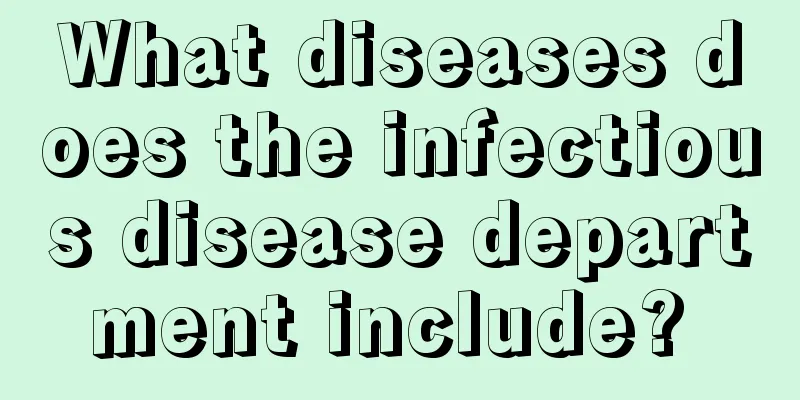What diseases does the infectious disease department include?

|
In any hospital, there are many departments. Different departments have different responsibilities, and in the words of the people, different departments can treat different diseases. The reason for this distinction is that there are too many different types of patients nowadays. If they are not subdivided, the doctors will probably be extremely busy. What diseases can be treated in the infectious disease department of a hospital? The infectious disease department is also called the infectious disease department. The infectious disease department is the department that treats infectious diseases. Common infectious diseases include bacillary dysentery, typhoid fever, cholera, hepatitis A, meningitis, scarlet fever, whooping cough, influenza, measles, filariasis, Japanese encephalitis, schistosomiasis, etc. Infectious diseases are a type of disease caused by various pathogens that can be transmitted between people, animals, or between people and animals. Most of the pathogens are microorganisms, and a small part are parasites. Diseases caused by parasites are also called parasitic diseases. For some infectious diseases, the epidemic prevention department must keep abreast of the incidence and take timely countermeasures. Therefore, once discovered, they should be reported to the local epidemic prevention department in a timely manner within the prescribed time. These are called statutory infectious diseases. China currently has 38 statutory infectious diseases in three categories: A, B and C. Infectious diseases are characterized by the presence of pathogens, contagiousness and epidemicity, and often immunity after infection. Some infectious diseases are seasonal or endemic. There is no unified classification of infectious diseases. Some people classify them by pathogens, while others classify them by transmission routes. The prevention of infectious diseases should adopt comprehensive measures with the main focus on cutting off the main links of transmission. The spread and spread of infectious diseases must have three links, namely the source of infection (people and/or animals that can excrete pathogens), the transmission route (the route by which pathogens infect others) and susceptible people (people who are not immune to the infectious disease). If one of the links can be completely cut off, the occurrence and spread of the infectious disease can be prevented. The vulnerable links of various infectious diseases are different. It should be fully utilized in prevention. In addition to the dominant links, measures should also be taken for other links. Only in this way can we better prevent various infectious diseases. |
<<: What vitamins are missing for hangnails on hands
>>: Do I need to wash my face after applying the coix seed water mask
Recommend
10 symptoms and warning signs of colorectal cancer
Clinically, there are no 10 major symptoms that i...
What's the matter with chest tightness and shortness of breath
Many people are very distressed by chest tightnes...
What are the factors that affect milk secretion?
Mothers who have just given birth hope to have en...
Bloodletting and cupping to treat acne
There are many different ways to treat acne. Howe...
What are the hazards of titanium to the human body?
Today's society is developing at a dazzling s...
Please do a good check before treating lung cancer
Before we treat lung cancer, we usually have to c...
Age of onset of hereditary colorectal cancer
Colorectal cancer mainly includes colon cancer an...
What's wrong with abnormal platelet function test
There are many diseases in life that can cause su...
What are the diagnostic criteria for small cell lung cancer
Lung cancer is a common malignant lung tumor, and...
What causes lung cancer headaches
Headaches in lung cancer patients may be related ...
How to exercise after liver cancer surgery? Rehabilitation exercises after liver cancer surgery follow three principles
Liver cancer is a primary tumor that occurs in th...
What are the symptoms of early lymphoma patients
Lymphoma is a common malignant tumor in the human...
Which department should I go to for teratoma
Teratomas can generally be treated in departments...
Reasons for swollen feet after chemotherapy for uterine cancer
Chemotherapy is very harmful to the human body, b...
The swelling of the chin was reduced so quickly after injecting hyaluronic acid
Injecting hyaluronic acid into the chin is a comm...









